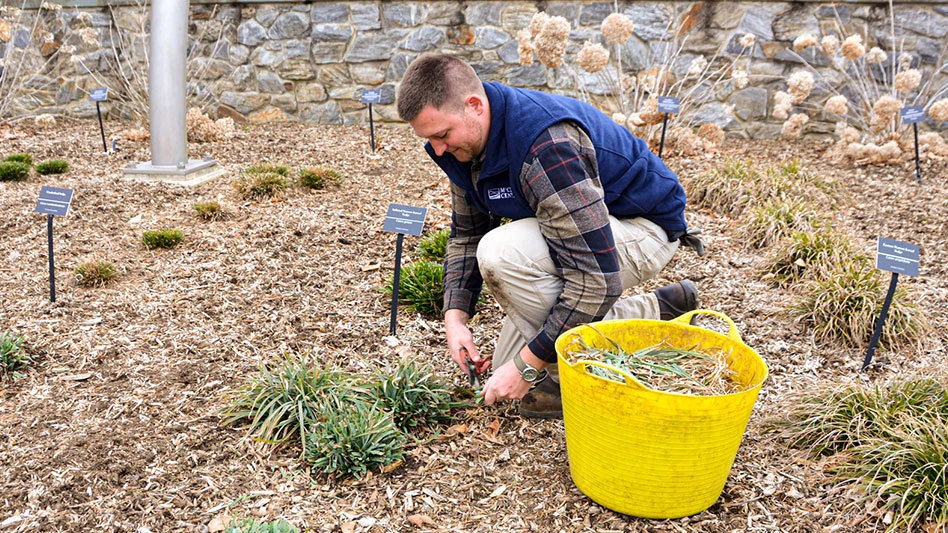

NM: How do you decide what species to trial?
SH: That's a fairly complicated question. Sometimes we try to anticipate market trends or hopefully, drive some market trends, in certain cases. For example, with the hydrangea trial (2017-2021), we felt that there were a lot of cultivars out there that hadn’t all been evaluated at the same place at the same time. So we really wanted to bring them together and help people make informed decisions based on what plants are out there.
With the Carex there was not as much information. We felt we could fill a gap there and help homeowners make an informed decision about what plants make sense where. In certain cases, we’d like to drive the demand, especially from plants that we think are under-represented in horticulture.
NM: What are some examples of plants you think are under-represented in horticulture?
SH: Goldenrods are an example, and we have a trial going on right now. Ironweeds are another, and we’re currently planning a mountain mint trial. There’s only a handful of species of Pycnanthemum that are commercially available, and we’re going to be assembling almost all the species known in America and trialing all of those. We want to promote these plants that are both great in the garden and great for wildlife.
NM: How many trials have you managed at Mt. Cuba Center?
SH: This is my fourth research report. Prior to me it was George Coombs who did five or six. The goal is to get information out there for nurseries and homeowners.

NM: What did you learn from your most recent trial, Carex?
SH: It was a 5-year trial, and we were looking at a cross section of commercially available Carex, as well as a handful that aren't as widely commercially available that were supplemented into the trial.
We’re looking to test Carex from a versatility and adaptability perspective. We grew all 70 different Carex in full sun as well as shade for four years, then we did an additional fifth year of the trial.
We actually did a mowing study to see if one of these plants could be a suitable replacement for turfgrass lawns.
At the end of the trial, we picked 16 plants that scored a 4.2 or better on our 5-point grading scale in sun, shade or both. Many of the Carex did really well in both. They’ve proven very adaptable, even outside of their normal wild comfort zones.

NM: The idea of Carex replacing grass is intriguing. Is that a trend you anticipate growing?
SH: I think they certainly could, and to me Carex is a more sustainable – in some ways, easier option than turf grass, especially in the long-term. And there are certain Carex that fit some of those trouble areas, like dry shade, that can be difficult for turf grass. There are a handful of Carex species that are really well adapted to those conditions that could be a suitable replacement for turf grass. A lot of Carex have proven to be extremely well-adapted to being mowed. They didn’t seem to mind it. And there were a handful that looked the part as well. There are plenty of Carex that you wouldn’t have to mow, as well. You could have that wild, meadowy look.

Explore the June 2023 Issue
Check out more from this issue and find your next story to read.
Latest from Nursery Management
- John Ruter shares UGA's latest woody and herbaceous ornamental plant breeding projects
- Conor Foy joins EHR's national sales team
- Pantone announces its 2026 Color of the Year
- Syngenta granted federal registration for Trefinti nematicide/fungicide in ornamental market
- Get to know Kayela Aeppli
- HILA 2025 video highlights: John Gaydos of Proven Winners
- Q&A with Justin Bartlett
- Be the best choice





